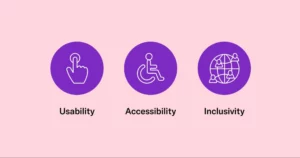In today’s fast-paced world, prioritizing employee well-being is more important than ever. A well-designed and effectively managed wellness incentive program can drive positive behavior change, improve health outcomes, and create a thriving work environment. In this blog, we will explore key strategies and tips for successful wellness incentive management and implementation. Join us on this journey to unlock the power of wellness incentives, and remember, if you need assistance along the way, don’t hesitate to seek help from wellness experts who can provide invaluable guidance and support.
Contents
- 1 What Is Wellness Incentive?
- 2 Tips For Wellness Incentive Management
- 2.1 1. Set Clear Goals
- 2.2 2. Design Incentives Carefully
- 2.3 3. Make Incentives Meaningful
- 2.4 4. Promote Communication and Education
- 2.5 5. Ensure Accessibility and Inclusivity
- 2.6 6. Track Progress and Provide Feedback
- 2.7 7. Maintain Privacy and Confidentiality
- 2.8 8. Evaluate and Adjust
- 2.9 9. Foster a Culture of Wellness
- 2.10 10. Promote Long-Term Sustainability
- 3 Importance Of Wellness Incentive Management
- 4 Conclusion
What Is Wellness Incentive?
 Wellness incentives are rewards or benefits offered by organizations to encourage individuals to adopt and maintain healthy behaviors. These incentives, which can include financial rewards or other perks, aim to motivate individuals to engage in activities that promote their overall well-being. By providing incentives, organizations seek to create positive reinforcement systems that encourage healthy choices, leading to improved health outcomes and potential cost savings in healthcare.
Wellness incentives are rewards or benefits offered by organizations to encourage individuals to adopt and maintain healthy behaviors. These incentives, which can include financial rewards or other perks, aim to motivate individuals to engage in activities that promote their overall well-being. By providing incentives, organizations seek to create positive reinforcement systems that encourage healthy choices, leading to improved health outcomes and potential cost savings in healthcare.
Tips For Wellness Incentive Management
Managing wellness incentives effectively is crucial to ensure their success and maximize their impact on individuals’ health and well-being. Here are some tips for wellness incentive management:
1. Set Clear Goals
- Clearly define the objectives of your wellness incentive program, such as reducing absenteeism, improving employee morale, or lowering healthcare costs.
- Break down the goals into specific, measurable targets to track progress effectively.
- Align the goals with the overall mission and values of your organization to ensure coherence and relevance.
2. Design Incentives Carefully
 Offer a variety of incentives to cater to different preferences and motivations. This can include cash rewards, gift cards, extra paid time off, merchandise, or discounts on health-related services.
Offer a variety of incentives to cater to different preferences and motivations. This can include cash rewards, gift cards, extra paid time off, merchandise, or discounts on health-related services.- Consider the budget and resources available for incentives and allocate them strategically to maximize impact.
- Personalize incentives whenever possible to make them more meaningful and engaging for individuals.
3. Make Incentives Meaningful
- Tie incentives directly to health-promoting behaviors and outcomes. For example, reward employees for achieving specific fitness milestones, participating in wellness challenges, or completing health assessments.
- Ensure that the incentives are perceived as valuable and desirable by the target audience. Conduct surveys or focus groups to gather feedback and preferences from participants.
4. Promote Communication and Education
- Develop a comprehensive communication plan to inform participants about the wellness incentive program, its purpose, and how to participate.
- Use multiple channels such as emails, newsletters, intranet, posters, or social media to reach employees effectively.
- Offer educational resources, workshops, or seminars to provide information on topics such as nutrition, stress management, or physical activity, and highlight the benefits of wellness.
5. Ensure Accessibility and Inclusivity
 Design the program to be inclusive of all individuals, regardless of their health conditions, abilities, or personal circumstances.
Design the program to be inclusive of all individuals, regardless of their health conditions, abilities, or personal circumstances.- Provide options for individuals with different preferences or limitations. For example, offer alternative activities for employees who cannot participate in physically demanding exercises.
- Ensure that the program is easily accessible, both in terms of physical accessibility and digital accessibility for remote or disabled individuals.
6. Track Progress and Provide Feedback
- Implement a tracking system to monitor participants’ progress toward their goals.
- Provide regular feedback and updates on participants’ achievements to keep them motivated and engaged.
- Utilize technology platforms or wellness apps that allow participants to track their progress and receive personalized feedback.
7. Maintain Privacy and Confidentiality
- Establish strict privacy protocols to safeguard participants’ personal health information.
- Comply with relevant privacy regulations and data protection laws.
- Communicate the privacy measures in place to build trust and reassure participants about the confidentiality of their data.
8. Evaluate and Adjust
 Regularly evaluate the effectiveness of the wellness incentive program through surveys, focus groups, or data analysis.
Regularly evaluate the effectiveness of the wellness incentive program through surveys, focus groups, or data analysis.- Collect feedback from participants to understand their experiences, challenges, and suggestions for improvement.
- Use the evaluation findings to make necessary adjustments, refine the program, and address any barriers or shortcomings.
9. Foster a Culture of Wellness
- Integrate wellness into the organizational culture by promoting healthy habits and practices beyond the incentive program.
- Encourage leadership involvement and support to set an example for employees.
- Create a supportive environment that encourages work-life balance, stress reduction, and overall well-being.
10. Promote Long-Term Sustainability
- Invest in long-term wellness initiatives beyond short-term incentives. Develop ongoing programs and resources that support sustained behavior change and a healthy lifestyle.
- Continuously review and update the wellness incentive program to ensure its relevance and effectiveness over time.
- Engage employees in the program’s development and implementation to foster a sense of ownership and commitment.
Importance Of Wellness Incentive Management
 Effective wellness incentive management is crucial for several reasons:
Effective wellness incentive management is crucial for several reasons:
- Encourages Participation: A well-managed wellness incentive program can significantly increase participation rates among individuals. By offering attractive incentives, individuals are more motivated to engage in health-promoting behaviors and actively participate in the program.
- Drives Behavior Change: Incentives serve as powerful tools for driving positive behavior change. They provide individuals with tangible rewards for adopting healthier habits and making sustained efforts to improve their well-being. Well-designed incentives can reinforce desired behaviors and increase the likelihood of long-term adherence.
- Boosts Employee Engagement and Morale: A well-managed wellness incentive program demonstrates an employer’s commitment to employee well-being. This can contribute to increased employee engagement, job satisfaction, and overall morale. Employees who feel supported in their health and well-being are more likely to be motivated, productive, and loyal to their organization.
- Creates a Culture of Wellness: An effectively managed wellness incentive program can foster a culture of wellness within an organization. When employees see that their employer values and invests in their health, it promotes a positive attitude towards well-being, encourages healthy behaviors, and creates a supportive environment for individuals to thrive.
- Enhances Return on Investment (ROI): Wellness programs can yield a positive ROI when well-managed. By improving employee health, reducing absenteeism, enhancing productivity, and lowering healthcare costs, organizations can realize financial benefits that outweigh the costs of implementing and maintaining the wellness incentive program.
- Promotes Personal Responsibility: Wellness incentives encourage individuals to take personal responsibility for their health. By providing rewards and recognition for proactive steps toward well-being, individuals become more accountable for their lifestyle choices and are motivated to make positive changes in their behavior.
- Improves Organizational Reputation: A well-managed wellness incentive program can enhance an organization’s reputation as an employer that prioritizes employee well-being and fosters a positive workplace culture. This can attract top talent, increase employee loyalty, and positively impact the organization’s brand image.
Conclusion
In conclusion, effective wellness incentive management plays a vital role in promoting healthier behaviors, improving health outcomes, and fostering a supportive work environment. By setting clear goals, designing meaningful incentives, and prioritizing communication and evaluation, organizations can drive positive behavior change and create a culture of wellness. However, navigating the complexities of wellness incentive management can be challenging. If you need assistance in implementing and optimizing your program, don’t hesitate to seek help from wellness experts or consultants who can provide valuable guidance and support.
Employee wellness programs are the key to improving employee motivation, productivity, and retention. At MantraCare, we have a team of health experts, counselors, and coaches who serve corporate employees with 10+ well-being programs including EAP, Employee Diabetes Reversal, Corporate MSK, Employee Fitness, Corporate Yoga, and Employee Meditation.

 Offer a variety of incentives to cater to different preferences and motivations. This can include cash rewards, gift cards, extra paid time off, merchandise, or discounts on health-related services.
Offer a variety of incentives to cater to different preferences and motivations. This can include cash rewards, gift cards, extra paid time off, merchandise, or discounts on health-related services. Design the program to be inclusive of all individuals, regardless of their health conditions, abilities, or personal circumstances.
Design the program to be inclusive of all individuals, regardless of their health conditions, abilities, or personal circumstances. Regularly evaluate the effectiveness of the wellness incentive program through surveys, focus groups, or data analysis.
Regularly evaluate the effectiveness of the wellness incentive program through surveys, focus groups, or data analysis.